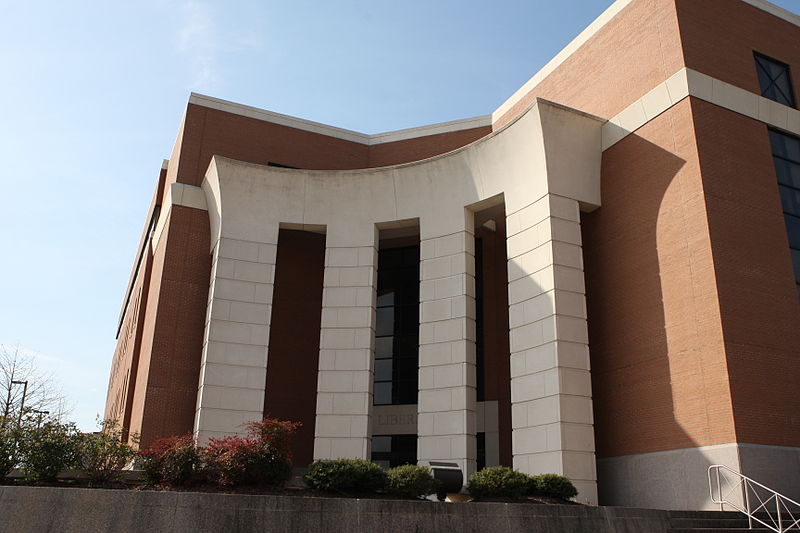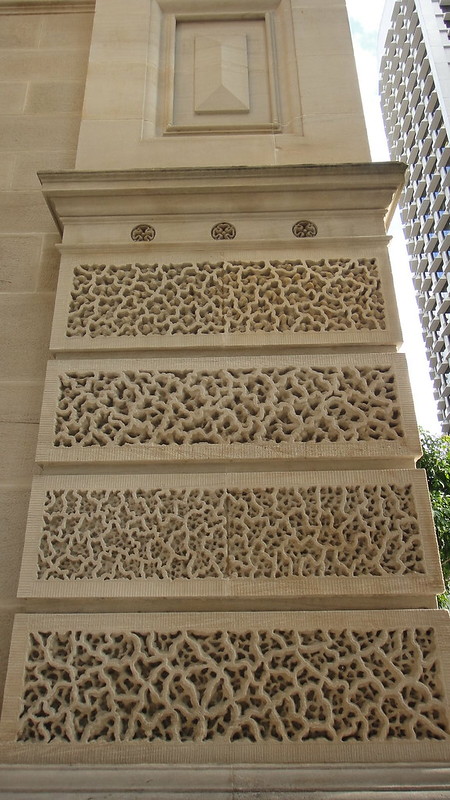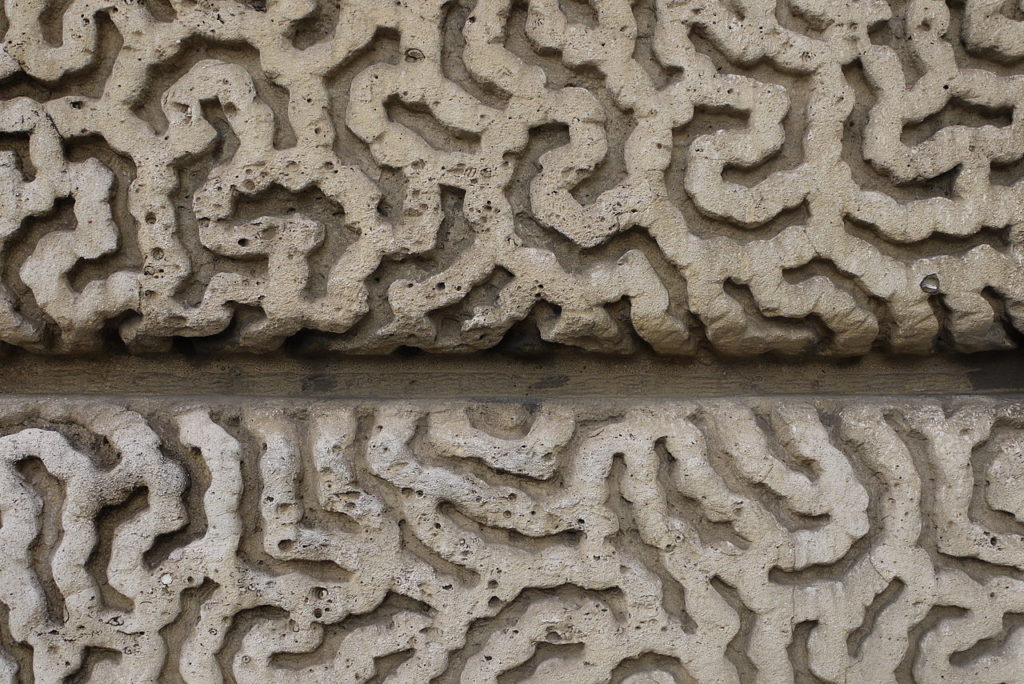Estimated reading time: 4 minutes

Banded rustication in a wholly modern context.
Rustication is a range of masonry techniques. The style gives visible surfaces a finish that contrasts in texture with the smoothly finished, squared-block masonry surfaces called ashlar.

Each block’s front side or visible face is cut back around the edges to make its size and placement very clear.
The central part of the face of each block is often given a deliberately rough or patterned surface.
A common example of a smooth rusticated effect is the quoin corner, highlighted by a chamfered edge. See this article discussing quoin corners here.
Rusticated masonry is usually “dressed” or neatly squared off on all sides except the face, which will be visible when the stone is put in place. The set stones are given wide joints to emphasize the edges of each block.

Some designs are noted by angling the edges, called “channel-jointed,” or dropping them back a little for added detail. The main part of the exposed face may be worked flat and smooth or left with, or worked, to give a more or less rough or patterned surface.
Molded from high-density polyethylene (HDPE), these “faux rusticated stones” have interlocking, rounded sections that install using a spike. They won’t rot, crack or color fade.
Vermicular Rustication

When the stone is left with a rough external surface, rough shapes may be drilled or chiseled in the somewhat smoothed face in a technique called “vermiculation” (vermiculated rustication or vermicular rustication), so called from the Latin vermiculus meaning “little worm,” because the shapes resemble worms, worm-casts or worm tracks in mud or wet sand.

Rustication is often used to give visual weight to the ground floor in contrast to the smooth ashlar above. Though intended to convey a “rustic” simplicity, the finish is highly artificial, and the faces of the stones are often carefully worked to achieve an appearance of a coarse finish.
Sand Casting
George Washington was no ordinary man, and the stone used on the exterior of his house was no ordinary stone. It wasn’t stone at all!
Washington employed a special technique in which he made his mansion look as if it were made of sandstone by cutting boards in the shape of blocks and covering them with paint and sand. Stone, after all, was much more chic than wood.
Tom Reinhart explains sand casting and how Washington used the smooth rustication process to create the exterior look of his mansion.
- - - - - - - - - - - - - - - - - - - - -